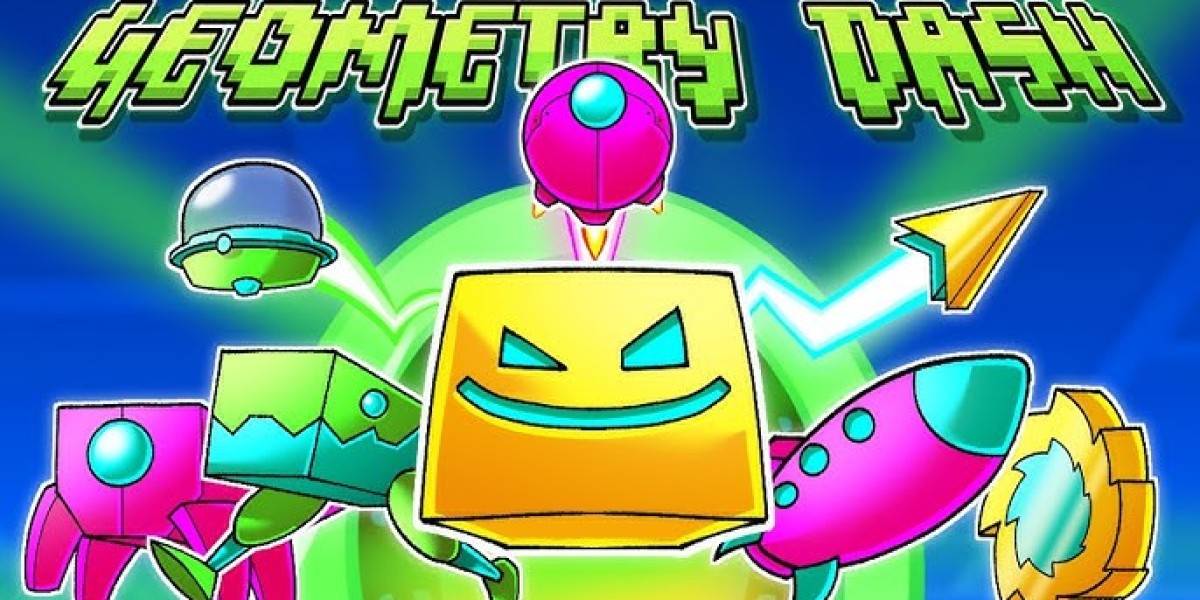In the landscape of mobile and indie games, Geometry Dash shines as one of the most addictive and recognizable titles ever created. Released in 2013 by Swedish developer Robert Topala under the studio RobTop Games, this rhythm-based platformer quickly became a global sensation. Known for its unforgiving difficulty, pulsating soundtracks, and vibrant visuals, Geometry Dash has cemented itself as more than just a game—it’s a cultural phenomenon.
Core Gameplay
At its heart, Geometry Dash is simple to understand but nearly impossible to master. Players control a small cube (or other unlockable icons) that automatically moves forward. By tapping or clicking, the cube jumps, flips, or flies depending on the game mode. The goal? Survive each level’s relentless gauntlet of spikes, gaps, and traps—all perfectly synchronized with the background music.
Key Features of Gameplay:
One-Touch Control: A single tap is all it takes to jump, but the timing is everything.
Rhythm Integration: Obstacles and level design are carefully aligned with the beat of the soundtrack.
Varied Mechanics: Portals transform gameplay by changing gravity, speed, or even turning the cube into a rocket ship, wave, or ball.
Instant Restarts: Death sends you back to the start, but the fast restart system keeps frustration from overwhelming determination.
This blend of simplicity and intensity makes every victory feel like a true achievement.
Soundtrack and Rhythm
One of Geometry Dash’s strongest assets is its music. The official soundtrack features energetic electronic tracks by artists like DJVI, Waterflame, and ForeverBound. Each level is designed around the rhythm, meaning that mastering the beat can help players anticipate obstacles.
The relationship between gameplay and music is so strong that many players describe Geometry Dash as both a platformer and a rhythm game.
Custom Levels and Community Creativity
What truly elevated Geometry Dash from a great game to a lasting cultural force is its level editor. Players can design and share their own stages, leading to a massive library of user-generated content.
Endless Replayability: Beyond the 20+ official levels, there are millions of fan-made creations.
Variety of Styles: From visually stunning “art levels” to brutal “Extreme Demon” challenges, creativity knows no bounds.
Community Hub: Online leaderboards, rating systems, and YouTube showcases have turned the community into a thriving ecosystem.
Some fan-created levels are so iconic that they rival or surpass the popularity of official stages.
Difficulty and Challenge
Geometry Dash is notorious for its difficulty. Levels range from Easy to Demon, with the hardest requiring near-perfect timing and memorization. This challenge, however, is the key to the game’s addictiveness.
Every failed attempt motivates players to try again, and completing a tough level brings immense satisfaction. This balance of frustration and reward has made the game a staple for speedrunners and challenge-seekers worldwide.
Expansions and Spin-Offs
The success of the original game led to several spin-offs and updates:
Geometry Dash Lite: A free version with limited levels.
Geometry Dash Meltdown, SubZero, and World: Standalone apps featuring new levels and exclusive music.
Geometry Dash 2.0 and beyond: Major updates introduced new icons, mechanics, and visual effects, keeping the game fresh years after release.
These expansions ensure that both new players and veterans always have something exciting to explore.
Cultural Impact
Over a decade after its release, Geometry Dash continues to thrive. On YouTube and Twitch, countless creators stream playthroughs, tutorials, and reaction videos. Memes based on the game’s difficulty are widespread, and its music has entered mainstream playlists.
Most importantly, Geometry Dash inspired a generation of players to not only enjoy games but also to create them. The level editor gave aspiring designers a platform to experiment with creativity and share it globally.






